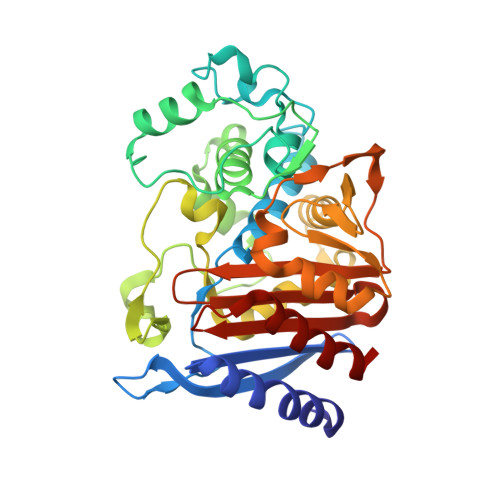Comprehensive mechanistic analysis of hits from high-throughput and docking screens against beta-lactamase.
Babaoglu, K., Simeonov, A., Irwin, J.J., Nelson, M.E., Feng, B., Thomas, C.J., Cancian, L., Costi, M.P., Maltby, D.A., Jadhav, A., Inglese, J., Austin, C.P., Shoichet, B.K.(2008) J Med Chem 51: 2502-2511
- PubMed: 18333608
- DOI: https://doi.org/10.1021/jm701500e
- Primary Citation of Related Structures:
2PU2, 2PU4, 2R9W, 2R9X - PubMed Abstract:
High-throughput screening (HTS) is widely used in drug discovery. Especially for screens of unbiased libraries, false positives can dominate "hit lists"; their origins are much debated. Here we determine the mechanism of every active hit from a screen of 70,563 unbiased molecules against beta-lactamase using quantitative HTS (qHTS). Of the 1,274 initial inhibitors, 95% were detergent-sensitive and were classified as aggregators. Among the 70 remaining were 25 potent, covalent-acting beta-lactams. Mass spectra, counter-screens, and crystallography identified 12 as promiscuous covalent inhibitors. The remaining 33 were either aggregators or irreproducible. No specific reversible inhibitors were found. We turned to molecular docking to prioritize molecules from the same library for testing at higher concentrations. Of 16 tested, 2 were modest inhibitors. Subsequent X-ray structures corresponded to the docking prediction. Analog synthesis improved affinity to 8 microM. These results suggest that it may be the physical behavior of organic molecules, not their reactivity, that accounts for most screening artifacts. Structure-based methods may prioritize weak-but-novel chemotypes in unbiased library screens.
Organizational Affiliation:
Department of Pharmaceutical Chemistry, University of California San Francisco, San Francisco, California 94158-2330, USA.


















